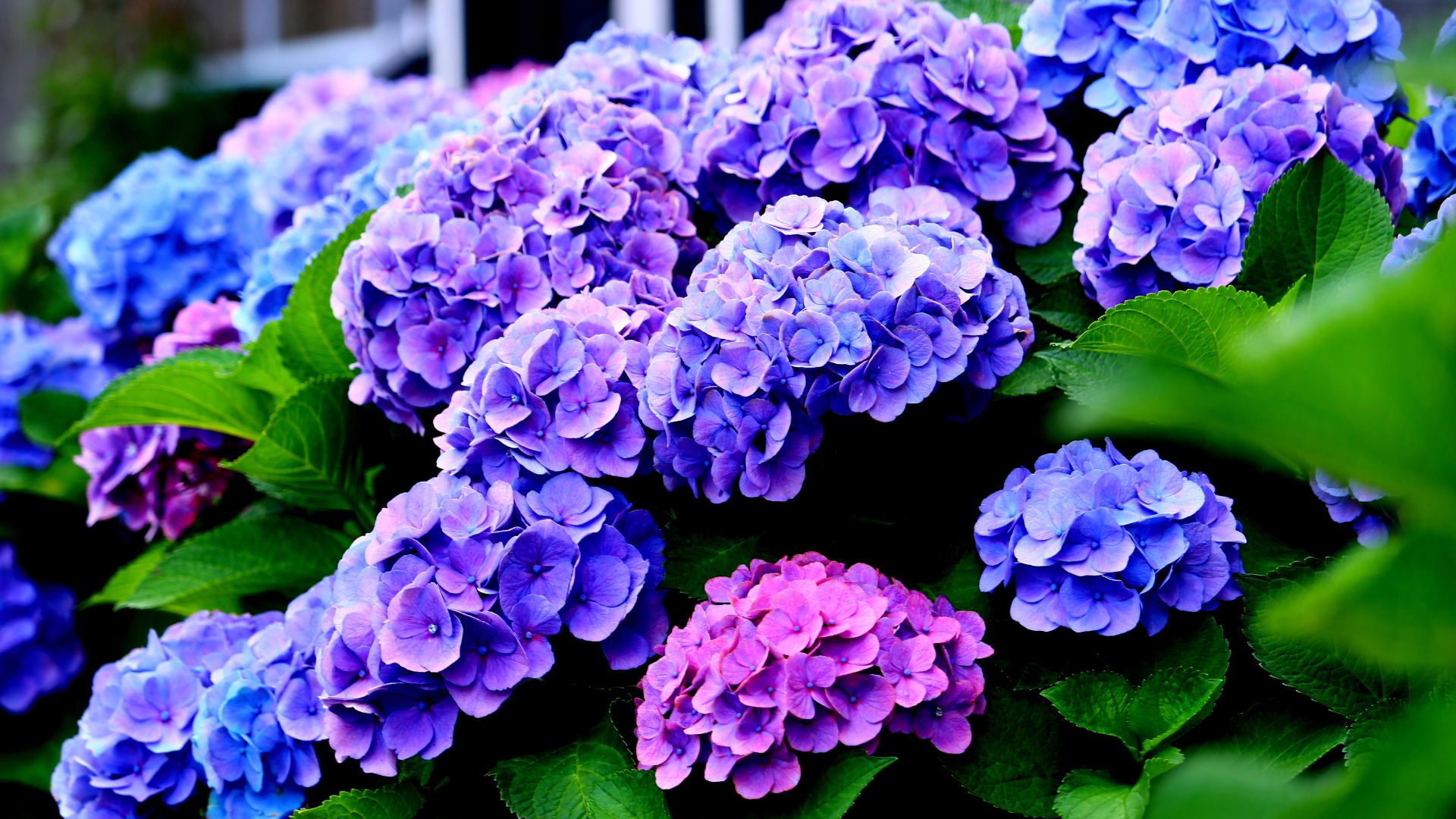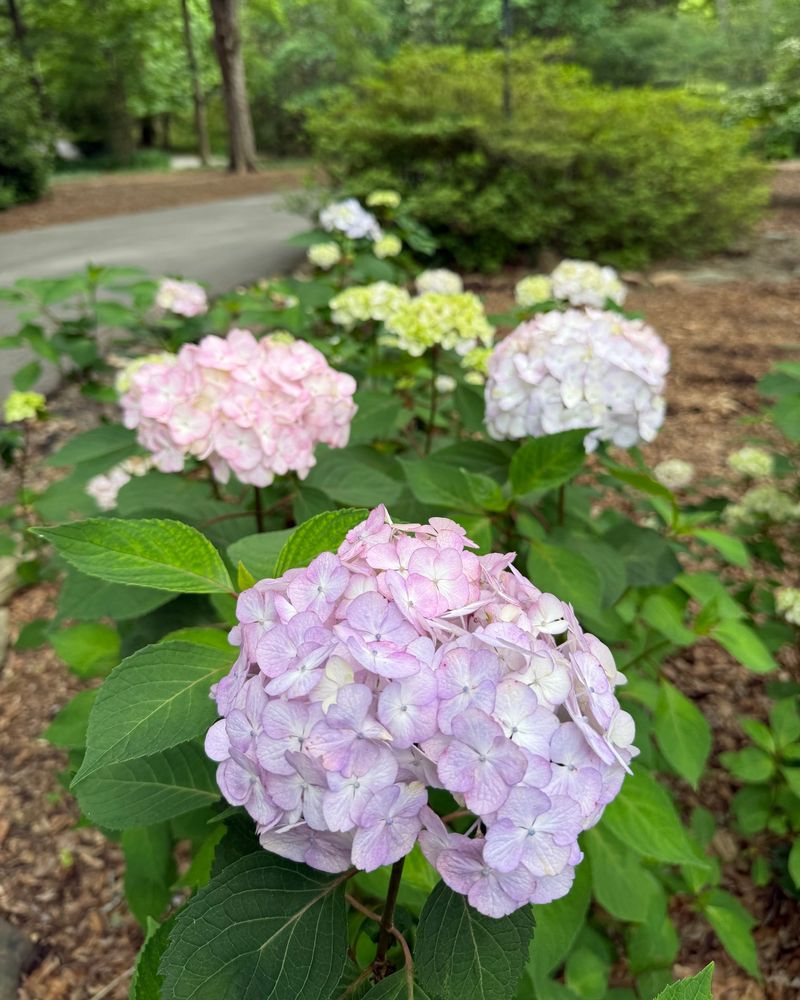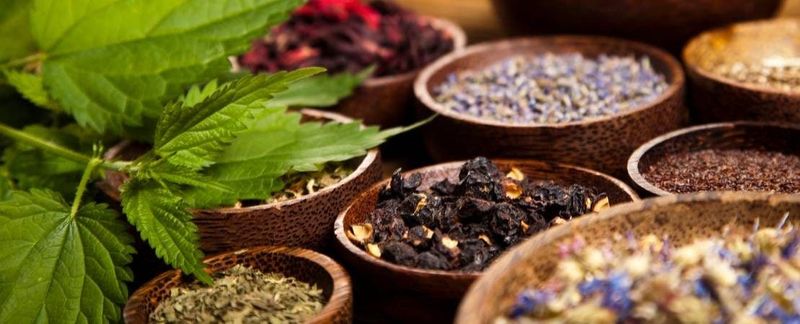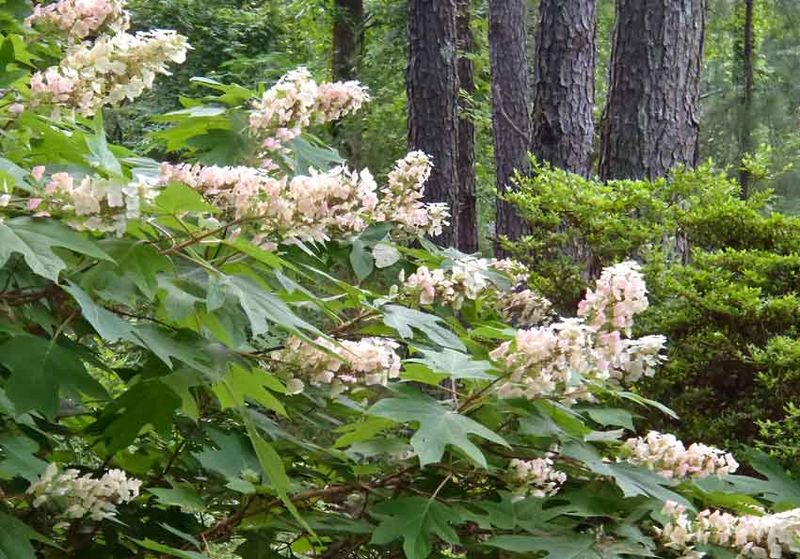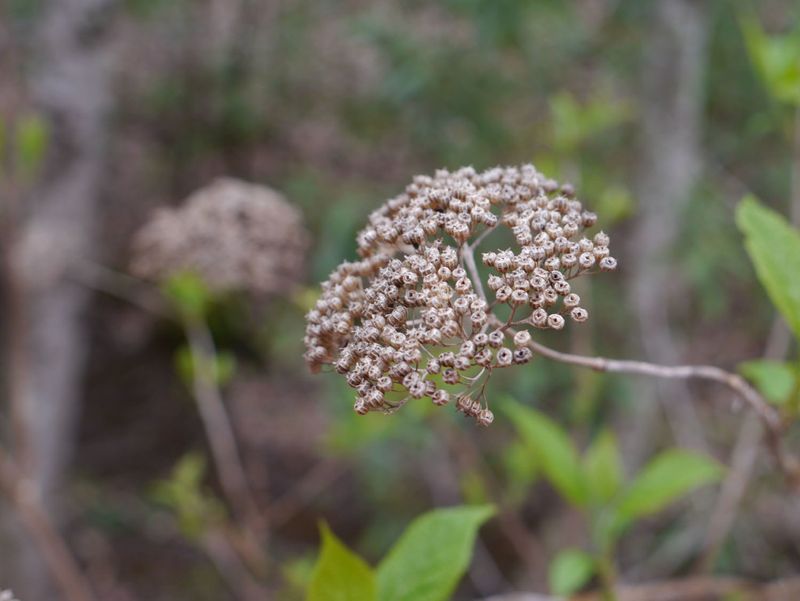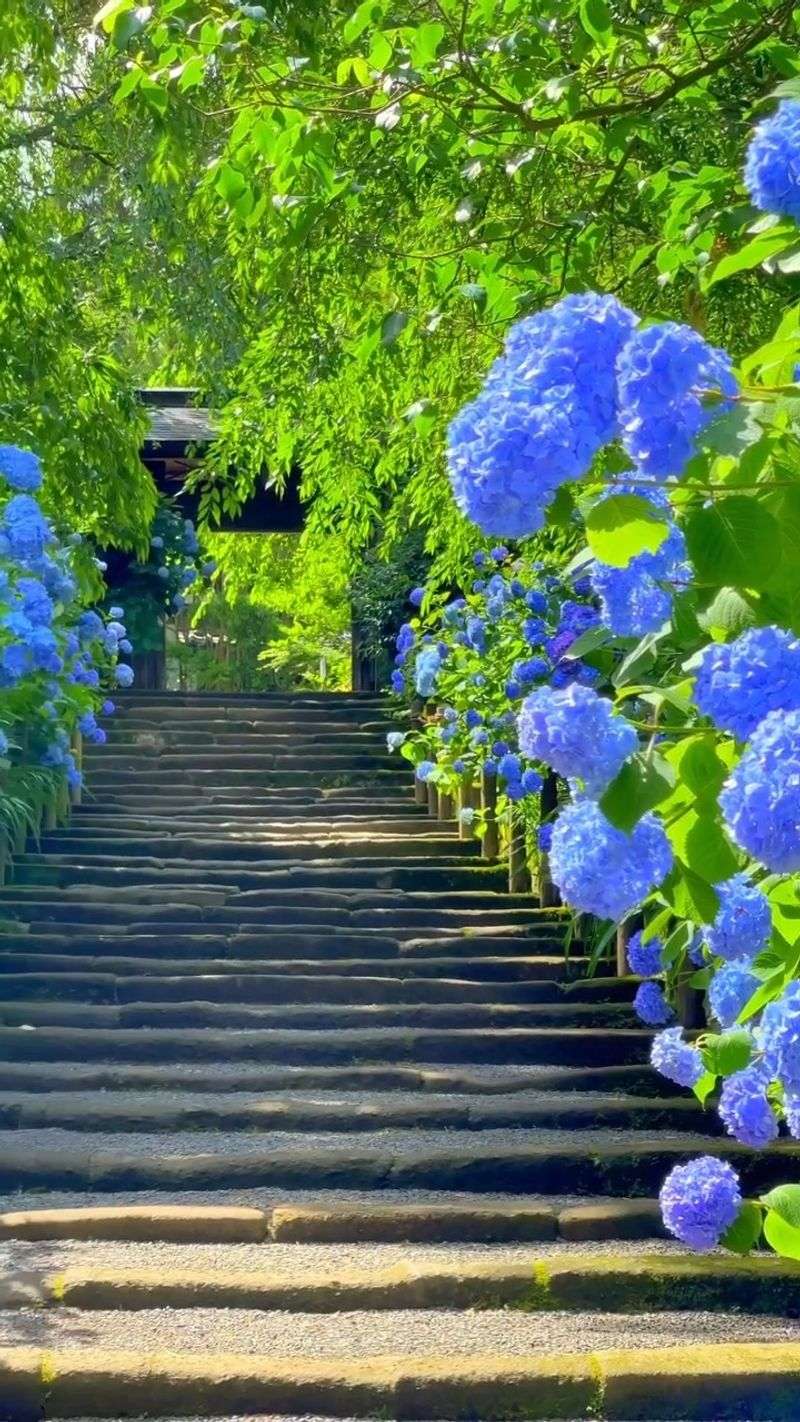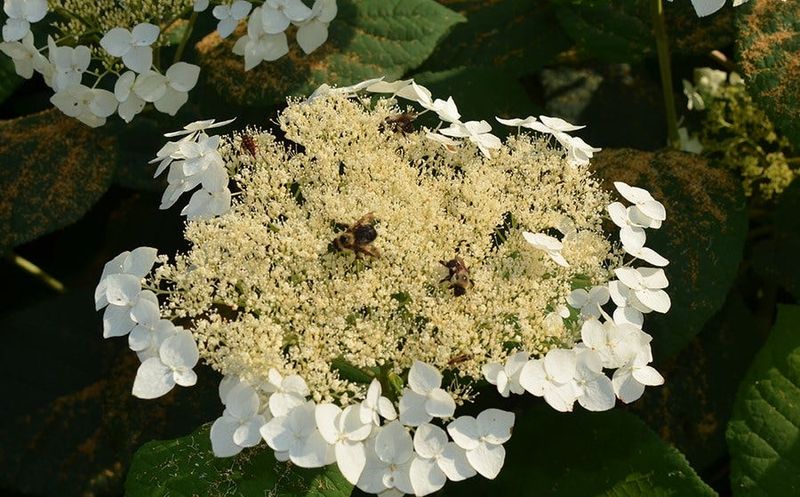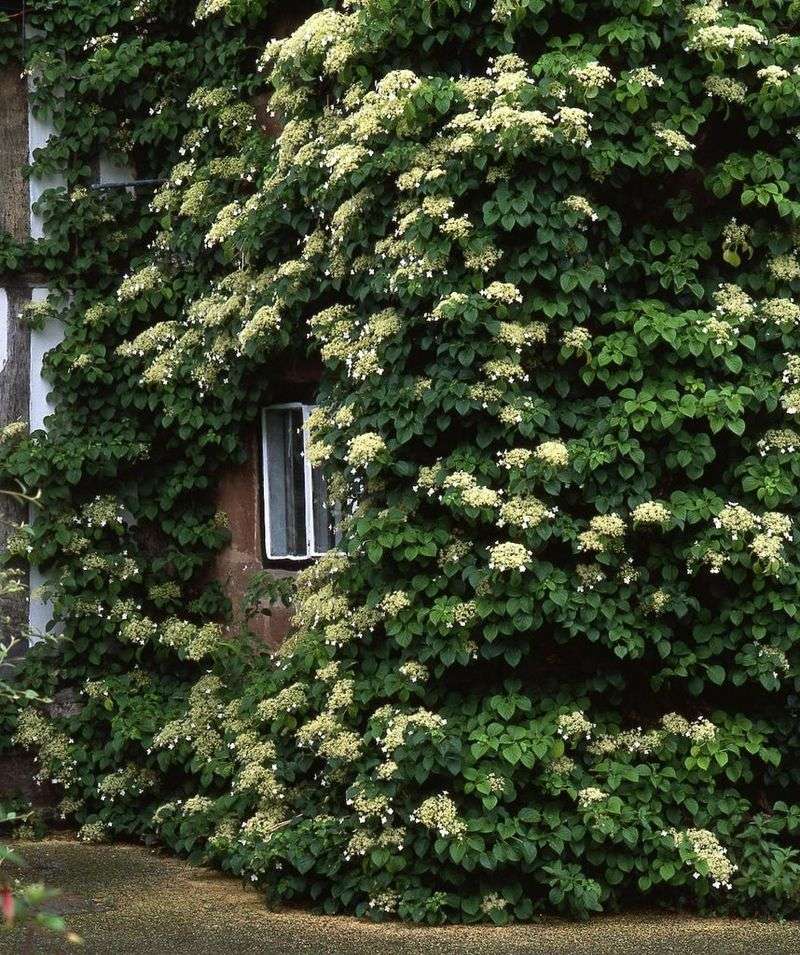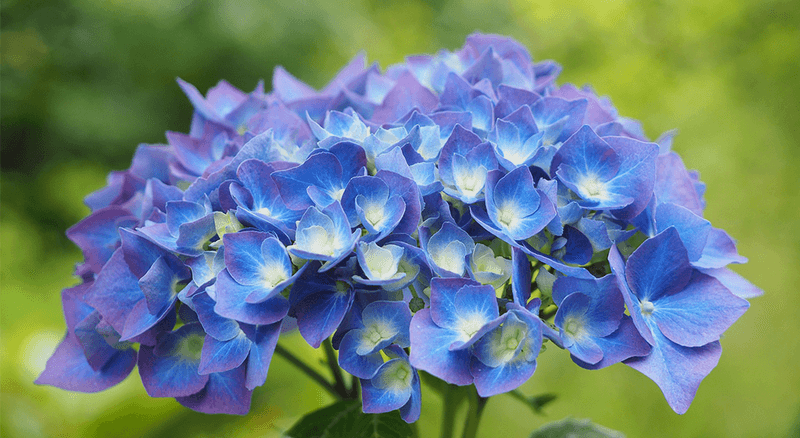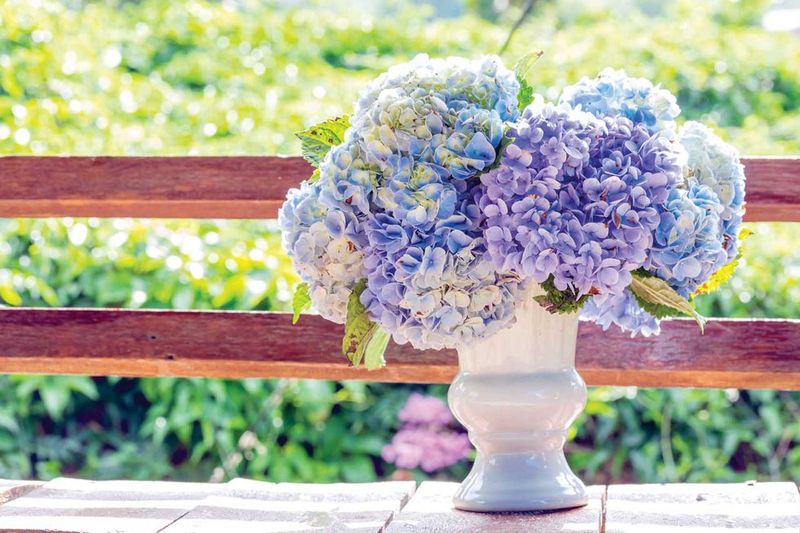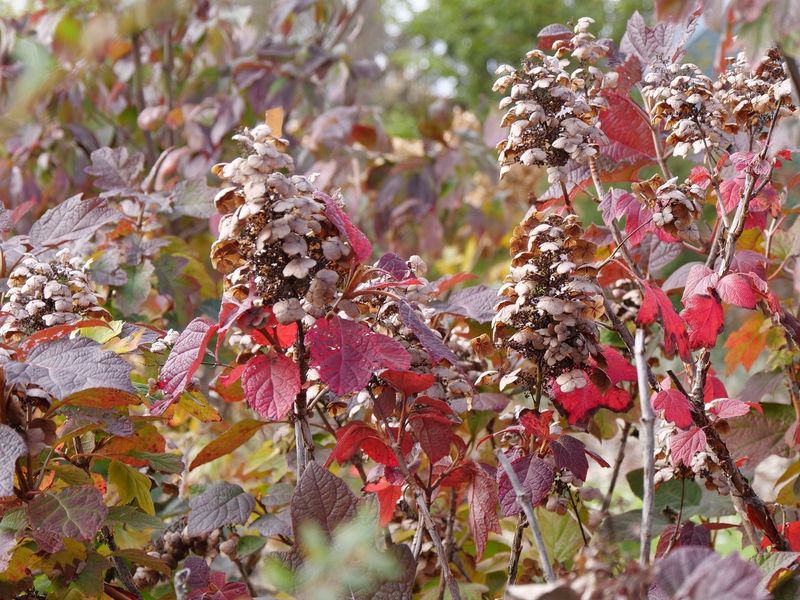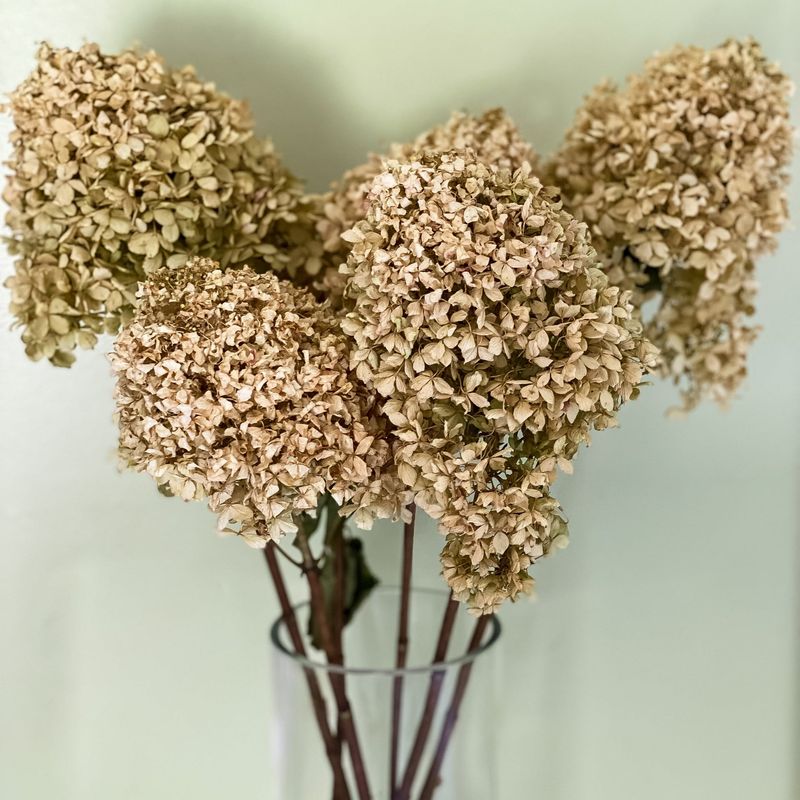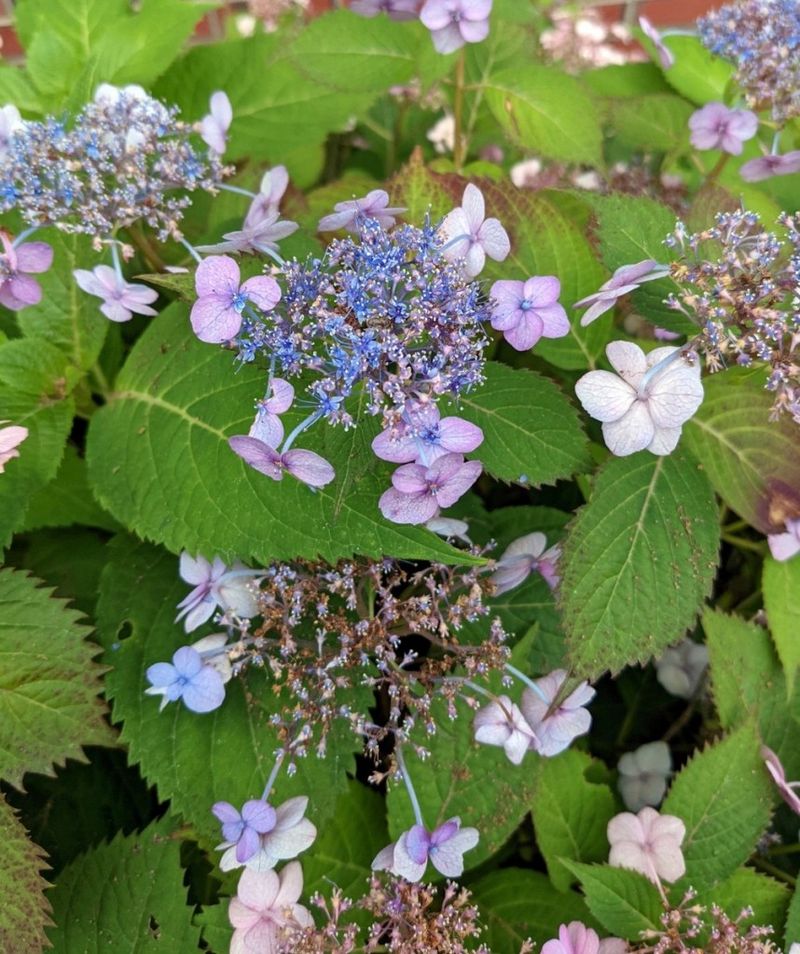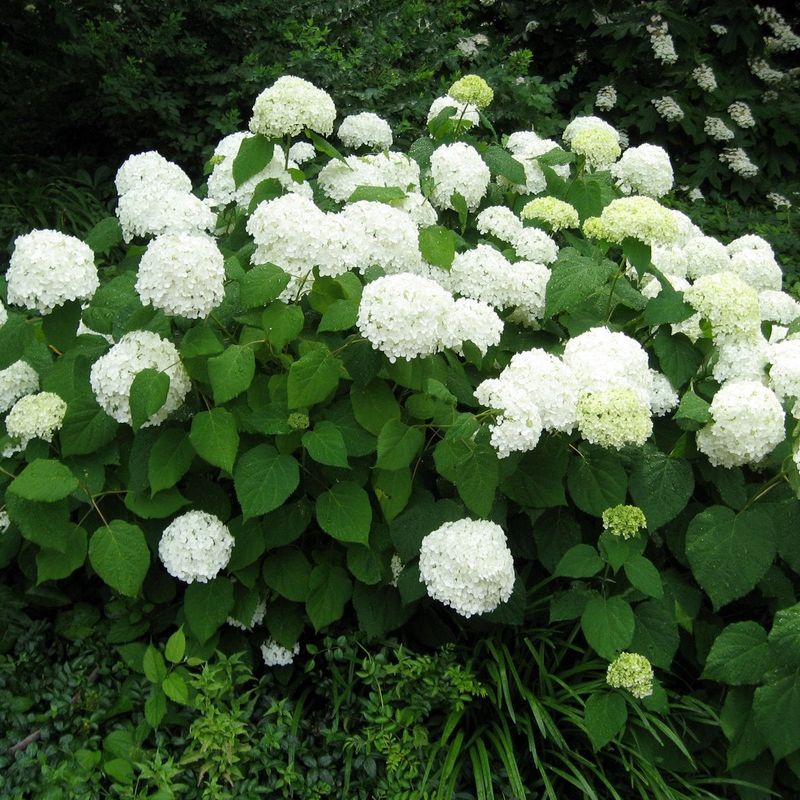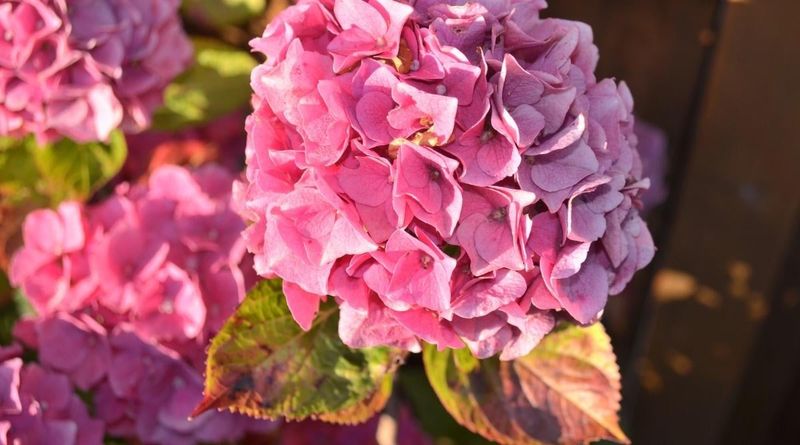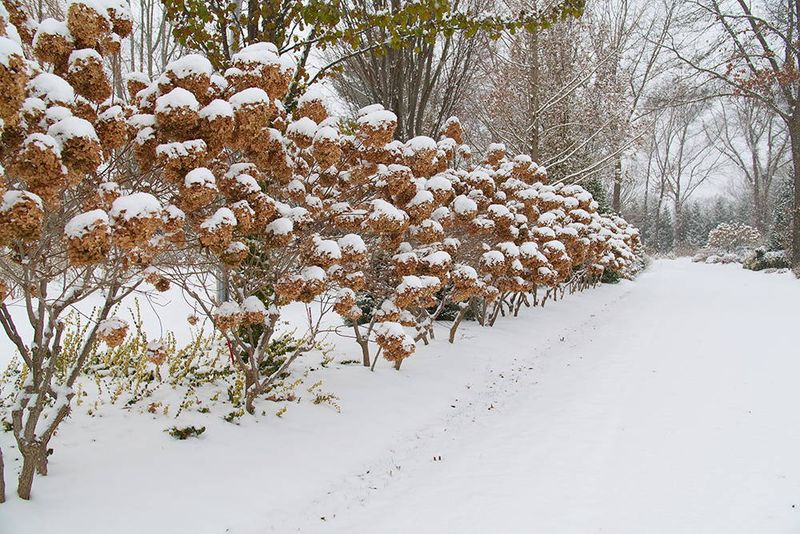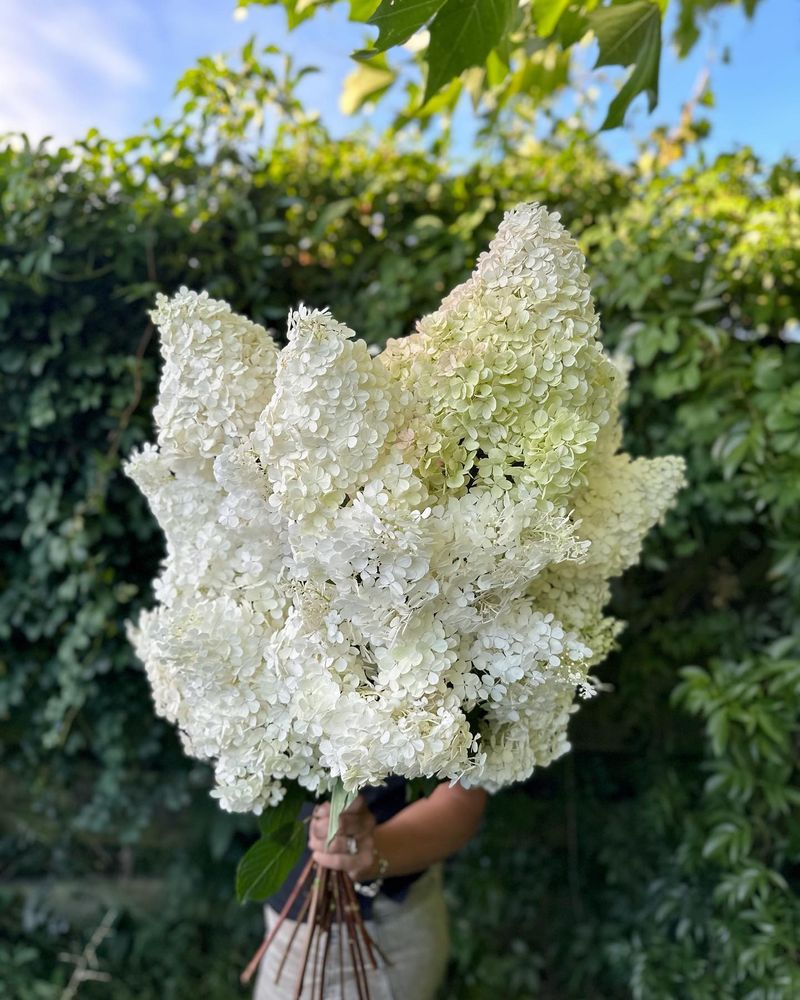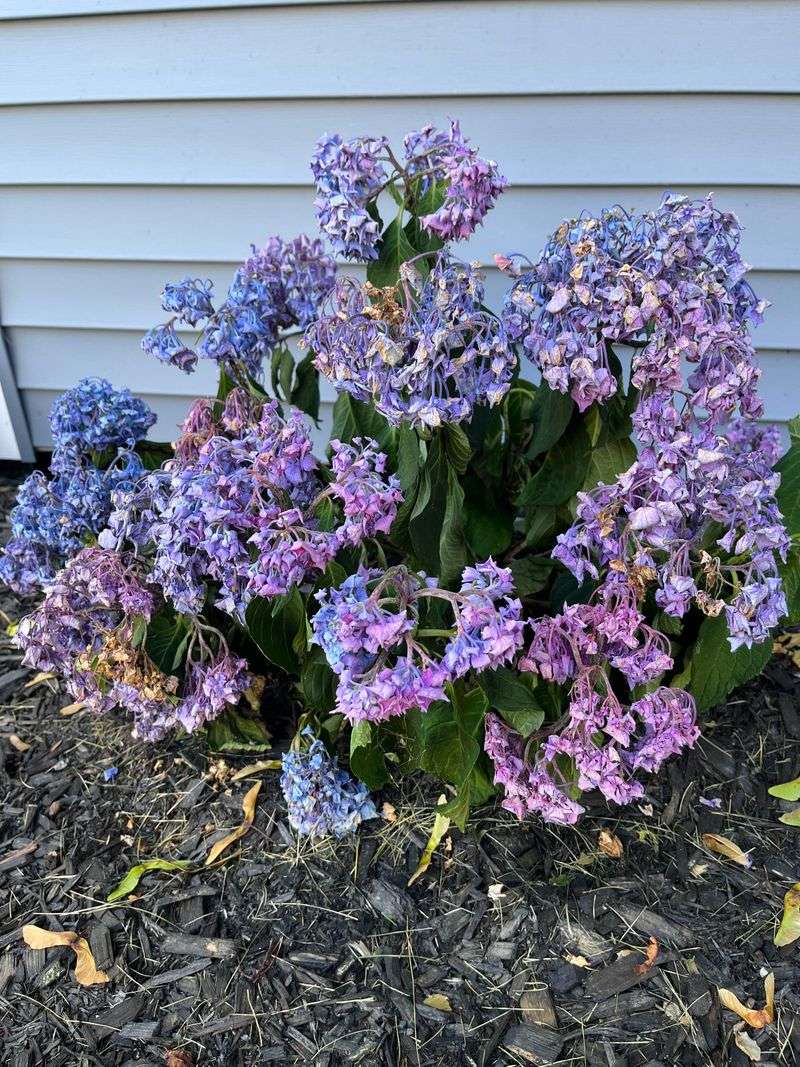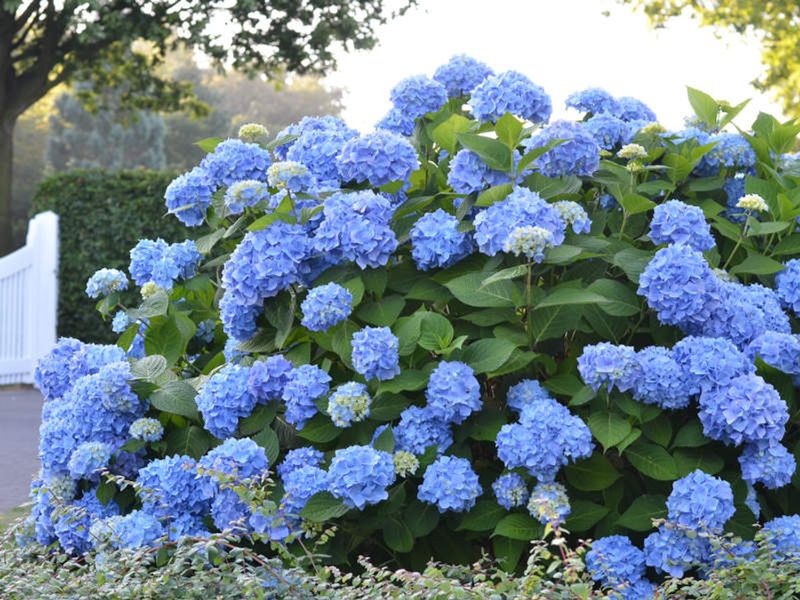Hydrangeas have captivated gardeners for generations with their showstopping blooms and remarkable versatility. These flowering shrubs grace gardens worldwide, yet harbor numerous secrets beneath their showy exterior.
I’ve grown hydrangeas for years and still discover fascinating tidbits about them that change how I care for these beauties. From color-changing abilities to medicinal properties, these plants are far more complex than they appear.
Ready to become a hydrangea expert? Here are 18 surprising facts about these beloved garden staples that most gardeners never hear about – some of which completely transformed my approach to growing them.
1. Color-Changing Soil Chemistry
The famous blue-to-pink color shift isn’t magic – it’s chemistry at work! Hydrangeas act like natural pH indicators in your garden. In acidic soil (below 5.5 pH), aluminum becomes available to the plant, creating those striking blue hues.
When I first planted hydrangeas, I couldn’t understand why mine looked different from the catalog pictures. Adding coffee grounds around my plants gradually transformed pink blooms to vibrant blue.
For pink flowers, sweeten the soil with garden lime. The aluminum becomes bound and unavailable, resulting in pink blooms instead. White hydrangeas, however, stay stubbornly white regardless of soil chemistry.
2. Ancient Medicinal Uses
Long before decorating our gardens, hydrangeas served as powerful medicine. Traditional healers in Japan and China used the root, bark, and leaves to treat kidney stones, malaria, and even autoimmune disorders.
I was amazed to learn the plant contains phellodendron, a compound studied for potential anti-inflammatory properties. My grandmother actually kept dried hydrangea root in her natural remedy cabinet.
Modern research continues exploring these traditional applications, though most parts contain low levels of cyanide compounds, so never self-medicate! The flowers themselves are considered mildly toxic if ingested – something to remember if you have curious pets.
3. They’re Actually Woodland Plants
Despite their sunny reputation, hydrangeas naturally grow as woodland understory plants. This explains why they wilt dramatically in harsh afternoon sun – they’re built for dappled light filtering through tree canopies.
For years I struggled growing them in my sunniest garden bed. Moving them to a spot that gets morning sun and afternoon shade transformed their performance completely.
Their woodland heritage also explains their love of rich, moist soil with plenty of organic matter. Think forest floor conditions! Adding a thick layer of mulch mimics their natural habitat and keeps their shallow roots cool and happy.
4. The Name’s Ancient Greek Origin
The word “hydrangea” comes from Greek: “hydor” meaning water and “angos” meaning vessel or jar. This perfectly describes both their constant thirst and the cup-shaped seed capsules they produce.
My garden journal notes always remind me that a wilting hydrangea is practically screaming for water! Their name has helped me remember their needs better than any care guide.
Ancient Greeks actually used the distinctive seed pods as small water vessels, similar to tiny cups. Next time you deadhead spent blooms, look closely at those capsules – you’re holding a piece of botanical history that’s remained unchanged for thousands of years.
5. Japan’s Hydrangea Temple
In Kamakura, Japan, the Meigetsu-in Temple is known as the “Hydrangea Temple” where over 2,500 plants bloom spectacularly each June. Visitors from around the world make pilgrimages specifically to witness this breathtaking display.
The temple’s circular window perfectly frames the hydrangea garden, creating what locals call “the window of enlightenment.” When I visited in 2018, the sight literally brought tears to my eyes.
Japanese hydrangea varieties differ from Western ones, with many featuring delicate star-shaped florets rather than the rounded mophead blooms we commonly grow. Their lacecap varieties have inspired much of my own garden design with their elegant, airy appearance.
6. Hydrangeas Produce No Nectar
Surprisingly, those massive showy blooms produce virtually no nectar for pollinators! The large colorful parts we admire are actually modified sepals, not true petals. The tiny flowers in the center contain the reproductive parts.
This revelation changed how I plant my garden. Now I always include nectar-rich companions nearby to support bees and butterflies.
The lack of nectar explains why you rarely see bees hovering around hydrangeas despite their impressive size. However, they do provide habitat value – I’ve spotted numerous beneficial insects using the large blooms as shelter during rain, and birds often nest in the sturdy branches.
7. They Can Climb 50+ Feet High
Most gardeners know hydrangeas as shrubs, but climbing hydrangeas (Hydrangea petiolaris) can scale buildings, trees, and cliffs to heights exceeding 50 feet! These aerial rootlets grip surfaces without damaging them.
My climbing hydrangea took three years to establish before suddenly taking off. That slow start tests gardeners’ patience, but the wait pays off spectacularly.
Unlike most vines that become a maintenance nightmare, climbing hydrangeas are remarkably well-behaved. They don’t require constant pruning to keep in check, and in winter, their exfoliating cinnamon bark adds textural interest when other plants look dormant. The oldest specimens in England are over 100 years old!
8. Aluminum Makes Them Blue
The stunning blue color in hydrangeas comes from a complex interaction with aluminum in the soil. The plant actually creates a natural aluminum chelate compound in its sepals, producing that coveted blue hue.
After struggling with stubbornly pink hydrangeas, I discovered that aluminum sulfate applications work faster than simply acidifying the soil. Within one season, my ‘Endless Summer’ transformed from mauve to vivid blue.
Interestingly, some newer hydrangea varieties have been bred to be permanently blue regardless of soil conditions. These cultivars, like ‘Mathilda Gutges’, maintain their color through genetic traits rather than soil chemistry – perfect for gardeners tired of fighting their soil’s natural tendencies.
9. Hydrangea Tea Ceremonies
In Japan, hydrangea tea called “Amacha” plays a central role in Buddha’s birthday celebrations each April. Made from dried leaves of mountain hydrangeas, this sweet-tasting tea contains a compound 400-800 times sweeter than sugar!
I tried making this tea once from specifically cultivated sweet-leaf hydrangeas (never common garden varieties, which aren’t edible). The naturally sweet flavor without any added sweetener was remarkable.
During Buddha’s birthday celebrations, the tea is poured over small Buddha statues and then served to participants. This symbolic cleansing ritual dates back to the Kamakura period (1185-1333) and represents spiritual purification and the sweetness of Buddhist teachings.
10. Oak-Leaf Varieties Change Color Twice
Oak-leaf hydrangeas (Hydrangea quercifolia) put on two color shows annually. First, their white summer flowers gradually transform to pink and burgundy as they age through fall.
Then comes the real surprise – their distinctive lobed leaves turn brilliant burgundy, orange, and purple with the first cold snap. The autumn display rivals any maple tree! My oak-leaf hydrangeas have become the backbone of my fall garden.
Unlike mophead types that look bedraggled after flowering, these natives maintain dignity throughout the seasons. They’re also significantly more drought-tolerant than their Asian cousins, having evolved in the southeastern United States where summer dry spells are common.
11. Dried Flowers Last For Years
Few gardeners realize that hydrangea blooms can be preserved for years without special chemicals or pressing. Simply cut mature flowers when they feel papery (usually late summer), remove leaves, and place in a vase without water.
I’ve kept arrangements lasting over five years using this method! The key is harvesting at exactly the right time – too early and they’ll wilt; too late and they’ll shatter.
For best color retention, avoid direct sunlight which fades the preserved blooms. Blue flowers typically dry to lovely antique teal shades, while pinks become rich burgundy. White varieties develop an elegant vintage cream or pale green color that complements any interior décor.
12. Natural Fabric Dyes
Before commercial dyes, hydrangea flowers created beautiful natural fabric colorants. The blue varieties produce lovely slate-blue to lavender hues, while the pink ones yield soft rose tints.
I experimented with hydrangea dye on silk scarves last summer. The results were subtle but beautiful – watercolor-like washes that commercial products simply can’t replicate. The mordant (fixing agent) you choose significantly affects the final color.
Alum produces brighter tones, while iron darkens and mutes the colors. Native Americans and early European settlers used these techniques long before synthetic dyes existed, creating clothing colors that harmonized perfectly with the natural landscape.
13. They’re Actually Dormant Deciduous Plants
Many gardeners panic seeing hydrangeas lose leaves in fall, thinking they’re dying. In reality, most hydrangeas are fully deciduous and need this dormant period to reset for spring.
The first winter with my ‘Annabelle’ hydrangeas, I nearly dug them up thinking they’d died! By spring, what looked like dead sticks erupted with vigorous new growth.
This dormancy requirement explains why hydrangeas struggle in tropical climates without a cool season. They need approximately 6-8 weeks of temperatures below 65°F to properly set buds for the following year. In very mild winter areas, varieties specifically bred for low-chill conditions perform much better.
14. Leaf Shine Secret
The glossy leaves of hydrangeas contain natural saponins – the same compounds found in soap plants. When it rains, these compounds create a self-cleaning effect that keeps the foliage remarkably pristine.
I’ve noticed how dust and dirt seem to slide right off my hydrangea leaves after a shower. Even in urban gardens near busy roads, they maintain their clean appearance better than most plants.
These saponins serve another purpose too – they’re mildly toxic to deer and rabbits, offering some natural protection from browsing. While no hydrangea is completely deer-proof, this natural chemical defense makes them less appealing than many other garden plants, especially when alternative food sources are available.
15. Surprising Cold Hardiness
While flower buds can be frost-sensitive, established hydrangea root systems are remarkably cold-hardy. Some varieties survive temperatures down to -30°F (-34°C) by going completely dormant above ground.
After a particularly brutal winter killed all visible growth on my hydrangeas, I resisted the urge to replace them. By June, new shoots emerged from the roots, eventually growing into full-sized plants by season’s end.
This resilience comes from their woodland understory evolution, where surviving harsh conditions was essential. When planting in cold regions, adding extra mulch around the crown provides insurance against winter damage. Even if stems die back, the plant will typically recover from its root system.
16. The Oldest Varieties Are Fertile
Most modern hydrangeas feature showy sterile flowers, but heirloom varieties contain fertile florets that produce viable seeds. These seed pods resemble tiny star-shaped capsules that eventually split open to release dust-like seeds.
I collected seeds from my grandmother’s century-old hydrangea and successfully grew several offspring plants. While they don’t bloom identically to the parent, each has unique characteristics that make them special.
Before commercial propagation, gardeners shared hydrangeas through seeds rather than cuttings. This explains the incredible diversity found in heritage gardens. Each seed-grown plant develops slightly different traits, creating living heirlooms with genetic links to plants grown generations ago.
17. Bigleaf Hydrangeas Drink Through Their Leaves
Unlike most plants, bigleaf hydrangeas (Hydrangea macrophylla) can absorb water directly through their leaves. This adaptation explains their remarkable recovery after wilting – a quick spray can revive them before root-absorbed water could reach the leaves.
During a heatwave last summer, I saved my severely wilted hydrangeas by misting the leaves hourly until evening. By morning, they looked perfectly healthy despite the soil still being somewhat dry.
This foliar absorption ability developed in their native Japanese forest understory habitat, where frequent mist and fog provided supplemental moisture. It’s why hydrangeas thrive in coastal gardens with regular marine fog, even with less-than-ideal soil conditions.
18. Reblooming Varieties Changed Everything
The introduction of reblooming hydrangeas like ‘Endless Summer’ in 2004 revolutionized hydrangea growing. Before this breakthrough, gardeners in cold regions often had no blooms after harsh winters destroyed flower buds.
My northern garden was transformed by these new varieties. Previously, I’d get flowers only every third year when winters were mild. Now I enjoy reliable blooms annually regardless of winter conditions.
The secret is their ability to flower on both old and new wood. Even if winter kills last year’s growth, the current season’s stems will still produce flowers. This genetic trait was discovered on a single branch mutation of an old-fashioned hydrangea, then isolated and developed through years of breeding.

